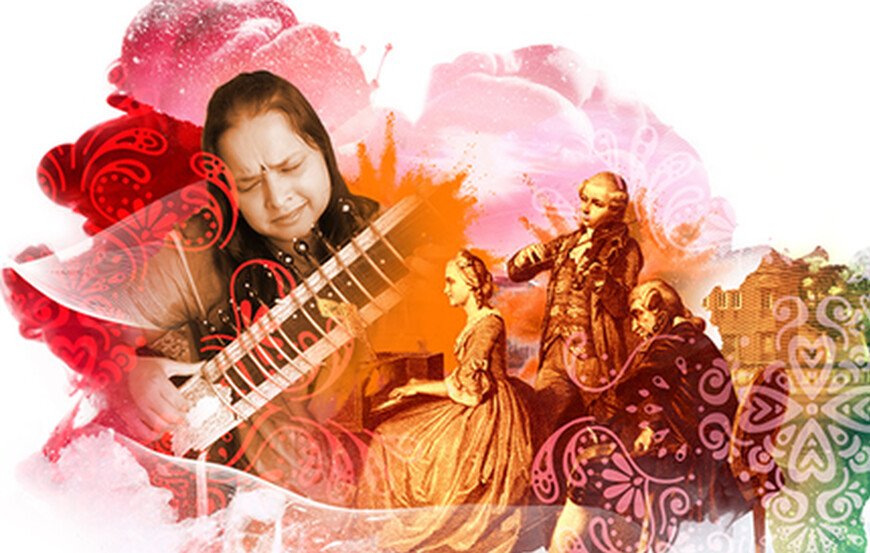Calcutta, Ensemble Tempus Fugit, Birmingham Town Hall, Sunday 24 April 2022, 3*** David Gray & Paul Gray
The premise behind Calcutta is an intriguing one. 18th Century Calcutta was effectively an English city in India to which English music was exported. This resulted in a cultural cross-fertilization between European classical music and classical Indian music. Ensemble Tempus Fugit seek to explore that cultural fusion through the story of a young English man who travels to India. The story is told through music and a semi-staged dramatic presentation with puppetry, and very small animated paper cuttings projected onto a makeshift backcloth.
Musically, the evening worked very effectively, with a selection of western music by the likes of Purcell, Dowland and Locke, and some traditional songs set side-by-side with Indian classical music. The juxtaposition created a definite frisson and culminated in Sri Dikshatar’s Paradevate, a realisation of the Welsh folk tune Ap Shenkin in Indian classical style. This was where we really got to hear how this coming-together of musical worlds worked.
The music for this concert was well curated to complement the narrative; it created a well-structured emotional arch. Countertenor, Hugh Cutting sang the bulk of the western numbers with great poise and beauty of tone. Vocalist, Debipriya Sircar sang the Indian classical elements of the programme with an astonishing range of tonal colour and stylistic detail. Enchantingly beautiful.
What didn’t work quite so well were the dramatic components of the piece. Looking at the performance history of Calcutta it seems to have been conceived for more intimate performance spaces. As a result, stage effects which might work very well with a close-up audience did not translate into the more expansive proportions of Birmingham Town Hall.
The projected animated paper cuttings used to represent the young man’s ship on its journey were charmingly childlike and evocative of visual effects which would have been used to present seascapes in 18th Century theatres. However, the projection was so very small the desired effect was lost. Similarly, the puppets needed to be much bigger to have any impact beyond the first few rows of the auditorium. Poor lighting didn’t help, either, and the whole staging had a slightly thrown-together, improvised feel. This may well have been deliberate, but it left the impression of something rather messy; something workshopped rather than a polished, finished product.
This is a shame, because the evening was so very interesting musically. As the audience for this event was so small, the planners might have first considered only booking seats in the stalls. This has been done before to great effect and success in both Birmingham Town Hall and Symphony Hall.
Katie de la Matter – harpsichord, creative direction
Thomas Guthrie – stage direction, puppetry, tenor
Hugh Cutting – countertenor
Debipriya Sircar – Indian classical vocalist
Jonathan Mayer – sitar
Jamie Akers – lute & guitar
Emily Baines – recorders
George Clifford – Baroque violin
Jacob Garside – bass viol
Monika Zwierschowska – stage manager, costume supervision
Carey Chomsoonthorn – lighting designer
Lina Petersson – movement direction, puppeteer
Zulaiha Sheikh - actor, puppeteer
Sean Garratt – puppeteer
Amy Rowe & Lori Hopkins – puppets
